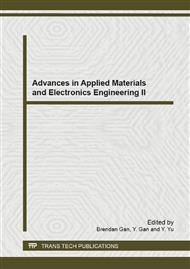p.604
p.611
p.616
p.621
p.626
p.630
p.634
p.639
p.644
An Empirical Analysis of the Regional Influence of FDI on Energy Efficiency in China
Abstract:
Based the panel data of China from 1997 to 2008, this paper constructed the regional total-factor energy efficiency (TFEE) by using the method of the data envelopment analysis (DEA) and then discussed the regional influence of FDI on local energy efficiency. The empirical results show that, FDI improved Chinese average level of energy utilization efficiency; the FDI inflow in the eastern region and the central region improved local energy efficiency, however, western area FDI reduced the energy efficiency. Some policy suggestions are also put forward for energy-saving and emission reduction target.
Info:
Periodical:
Pages:
626-629
Citation:
Online since:
April 2013
Authors:
Price:
Сopyright:
© 2013 Trans Tech Publications Ltd. All Rights Reserved
Share:
Citation:


